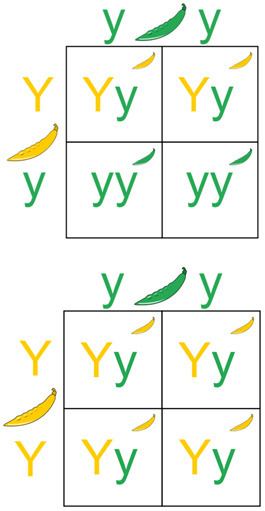 | ||
In genetics, a test cross, first introduced by Gregor Mendel, involves the breeding of an individual with a phenotypically recessive individual, in order to determine the zygosity of the former by analyzing proportions of offspring phenotypes. Zygosity can either be heterozygous or homozygous. Those that are heterozygous have one dominant and one recessive allele. Individuals that are homozygous dominant have two dominant alleles, and those that are homozygous recessive have two recessive alleles.
The genotype that an offspring has for each of its genes is determined by the alleles inherited from its parents. The combination of alleles is a result of the maternal and paternal chromosomes contributed from each gamete at fertilization of that offspring. During meiosis in gametes, homologous chromosomes experience genetic recombination and segregate randomly into haploid daughter cells, each with a unique combination of maternally and paternally coded genes. Dominant alleles will override the expression of recessive alleles.
Test crosses are used to test an individual's genotype by crossing it with an individual of a known genotype. Individuals that show the recessive phenotype are known to have a homozygous recessive genotype. Individuals that show the dominant phenotype, however, may either be homozygous dominant or heterozygous. The phenotypically dominant organism is the individual in question in a test cross. The purpose of a test cross is to determine if this individual is homozygous dominant or heterozygous.
Test crosses involve breeding the individual in question with another individual that expresses a recessive version of the same trait. Analyzing the proportions of dominant and recessive offspring determines if the individual in question is homozygous dominant or heterozygous. If all offspring from the test cross display the dominant phenotype, the individual in question is homozygous dominant; if half the offspring display dominant phenotypes and half display recessive phenotypes, then the individual is heterozygous. Since the homozygous recessive individual can only pass on recessive alleles, the alleles the individual in question passes on determine the phenotypes of the offspring. '''''
